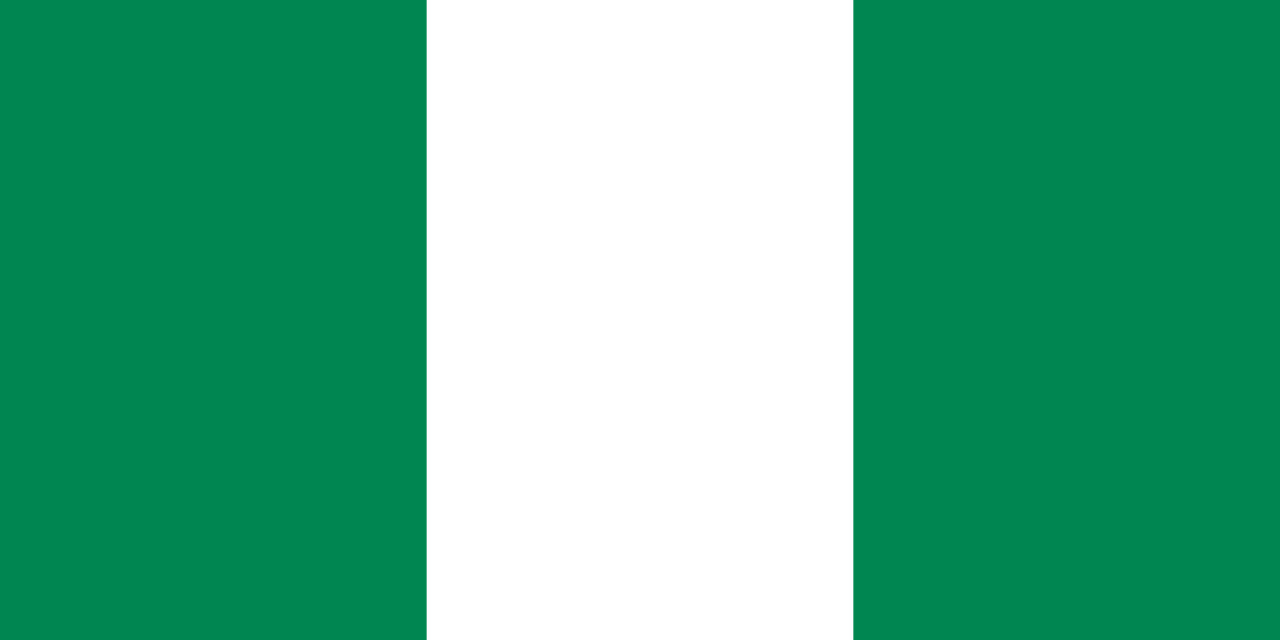Dimensions and Proportions: The Nigerian flag is rectangular with a width-to-length ratio of 1:2, making its length twice its width. Typically, the standard dimensions are 120 cm in width and 240 cm in length.
Design Elements:- Vertical Stripes: The flag is vertically divided into three equal stripes. The left and right stripes are vibrant green, while the middle stripe is crisp white.
- Colors: The shade of green used on the flag is known as "Nigerian Green," which is a distinctive and slightly darker hue than the typical bright green. This green represents Nigeria's vast natural resources, lush vegetation, and agricultural abundance. The white color symbolizes peace and unity, highlighting the nation's desire for harmonious coexistence among its diverse ethnic and religious communities.
- Unity: The central white stripe holds significant symbolism, representing the unity and harmony among Nigeria's diverse population. As a nation with over 250 ethnic groups and various religious affiliations, the white stripe reflects Nigeria's aspiration for peace, cooperation, and mutual understanding among its people.
- Peace: The white color on the flag carries the profound message of peace. It serves as a symbol of Nigeria's commitment to resolving conflicts amicably and maintaining a stable and tranquil society.
- Agriculture and Natural Resources: The parallel green stripes on both sides of the flag embody Nigeria's rich agricultural heritage, fertile land, and abundance of natural resources. These stripes symbolize the country's economic prosperity and underscore the significance of agriculture as a vital sector in the nation's development.
Historical Significance: The Nigerian flag was officially adopted on October 1, 1960, coinciding with the day Nigeria gained independence from British colonial rule. The flag's design emerged as the winner from a national competition that sought a suitable emblem to represent the country's identity and aspirations during this historic moment.
Protocol and Etiquette:- The Nigerian flag is raised daily at government offices, schools, and public buildings throughout the country, signifying the nation's sovereignty and pride.
- When displayed alongside other national flags, the Nigerian flag is given a position of honor, typically placed to the right of the other flags (viewer's left).
- During periods of national mourning or solemn occasions, the flag is flown at half-mast as a gesture of respect and mourning.
The Nigerian flag transcends its physical form; it embodies the collective values, heritage, and optimism of the Nigerian people. Its simple yet meaningful design serves as an enduring symbol of national pride, unity, and hope for a bright and prosperous future.

